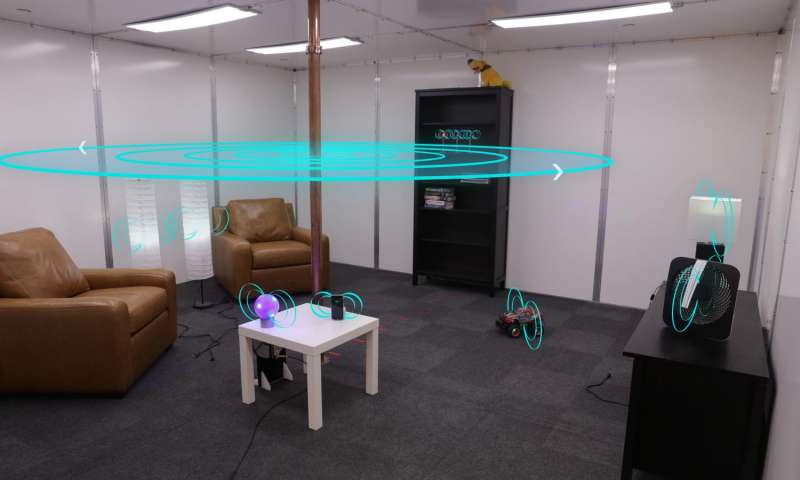Disney Research created a method to wirelessly transmit power through a room, allowing electronic devices to charge quickly via connected Wi-Fi hotspots, removing the need for electrical cords and charging cradles.

The method, deemed quasistatic cavity resonance (QSCR), was demonstrated by a specifically built 16 x 16-foot room with aluminum walls in the lab. The team created near-field standing magnetic waves that filled the room and made it feasible to power multiple smartphones, fans, and lights at the same time.
The new system makes it possible for electrical power to become as widespread as Wi-Fi.
“This, in turn, could enable new applications for robots and other small mobile devices by eliminating the need to replace batteries and wires for charging,” said Alanson Sample, associate lab director & principal research scientist at Disney Research.
Wireless power transmission has been an enduring technological goal. In the 1890s, inventor Nikola Tesla demonstrated a wireless lighting system and proposed a method for transmitting power over long distances to homes and factories, but the idea never came to light. Currently, most wireless power transmission occurs over short distances and involves charging stands or pads.
By inducing electrical currents in the metalized walls, floor, and ceiling, the QSCR method creates magnetic fields that spread throughout the room. In turn, power can be diffused smoothly to receive coils that work at the same resonant frequency as the magnetic fields. Discrete capacitors channel the induced currents and isolate any potential for harmful electrical fields.
During the test, a copper pole was placed in the center of the room, and a small gap was placed in the pole, where discrete capacitors were inserted. Those capacitors set the electromagnetic frequency of the structure and enclose the electric fields. Devices that operate at a low-megahertz frequency can collect power from anywhere in the room. Magnetic waves at that frequency don’t interact with metals and, thus, do not affect other objects in the room.
While the test room was specifically constructed, it’s possible to reduce the need for metalized walls, ceilings, and floors. Additionally, it may be possible to retrofit existing structures. Larger spaces can also be accommodated by adding multiple copper poles.
“In this work, we've demonstrated room-scale wireless power, but there's no reason we couldn't scale this down to the size of a toy chest or up to the size of a warehouse,” said Sample.
Source: Phys.org
Advertisement
Learn more about Electronic Products Magazine





